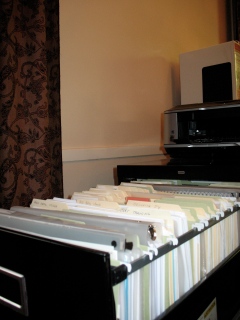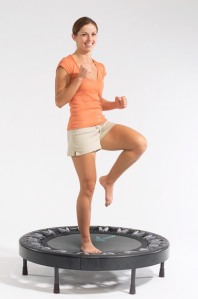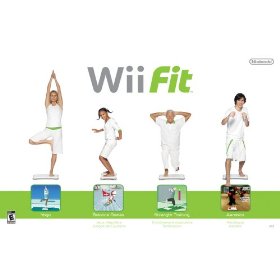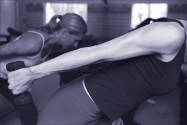Archive for the ‘Products’ Category
Worth Repeating – October posts from New Leaf News

Still fresh, still good for you! (Farmer's Market, Granville Island, British Columbia. Photo by Margaret Lukens)
I’ve dipped into the New Leaf News archives to share a few posts that still seem as fresh and relevant today as they did in Octobers past. In case you missed them the first time around, here they come again!
I’m still using mind-mapping as a technique to organize and view more information than is possible with a list or outline. And since I wrote about it last year, I have begun making some mind-maps using a piece of free software that couldn’t be easier: MindMeister. I recently used it to develop the curriculum for my new teleclass/workshop PortaVault Prep. It enabled me to fit essential notes for three hours of class time on a single page.
Do you believe that multitasking is a useful productivity practice? My work with clients indicates you’re not alone. Still, research on how our brains execute tasks is yielding stronger evidence that we need to stop interrupting ourselves. Read this advice from an 18th century father to his son, and take it to heart.
Want your productivity instructions boiled down like a concentrated sauce? Here is last year’s light-hearted look at the main ingredients of getting more done.
Wishing you a happy October!
One Easy Way to Get That Shredding Done
Feeding old financial documents and client files through a small office shredder is no one’s idea of fun. Finding a shredding company that will pick up less than 10 boxes of paper can be tough. So how does the small office or home office clear out a backlog of shredding?
Many local stores such as the UPS Store and various pack-and-ship places take shredding by the pound. I recently dropped off about 10 pounds (one fully loaded grocery bag) of confidential paper at a UPS store, where for $1.50 a pound they dump it into a locked container, which will be picked up by a NAID-certified shredding company.
The store didn’t advertise this service, and I scoured the UPS main website in vain, looking for the ability to search for this service throughout the US. Why they don’t advertise it more widely is a mystery to me. Many home and small offices are run by people with badly bruised knuckles, thanks to attempts to stuff just one more sheet into a file drawer that needs a good cleaning out.
How do you get your shredding done? When did you last do it? Any questions about what to shred? Leave a comment here.
Want Greater Productivity? Walk This Way.
 I’ve written before about ways to exercise when it seems hard to include exercise in your schedule. There’s another tool that I recently suggested to a client who wants to do a lot of exercise with no down-time. It’s a Steelcase desk called the Walkstation.
I’ve written before about ways to exercise when it seems hard to include exercise in your schedule. There’s another tool that I recently suggested to a client who wants to do a lot of exercise with no down-time. It’s a Steelcase desk called the Walkstation.
The Walkstation’s basic structure is a treadmill that operates at low speeds — 1 to 2 miles per hour — with a standing desk attached. The treadmill has a longer deck than normal to allow plenty of room for the desk in front, and a motor that is able to withstand the constant use at low speeds that would burn out the average exercise treadmill.
The science on these walking desks is consistent and solid (original research on the Walkstation was done at Mayo Clinic). The test subjects who got the Walkstations didn’t want to give them back when the tests were over.
Our brains work better after exercise, but even better still while exercising. Our bodies are made to walk all day. (Note: for a compelling and entertaining recap of the research on how exercise boosts brain power, see John Medina’s book Brain Rules.) Walking two hours per day, burning 100 calories per hour, weight loss is pretty much guaranteed. It’s not hard to talk while walking at low speeds; my client reports that learning to type while moving comes quickly, too.
If the $4,200 price tag slows you down, there are a few websites with instructions on how to make a treadmill desk yourself using a standard treadmill, though it’s not entirely easy. It requires a good-quality machine whose motor can withstand the slow-speed use. Also, the treadmill must have level arms to hold the laptop – again, not easy to find. Getting the height right to avoid arm, neck, and back strain can be tricky. The desk must be stable enough so that your computer never meets the treadmill in a fall. Also, the treadmill requires a longer than normal deck to accommodate the laptop, so you don’t fall off the back.
My client is loving the results. What do you think? Would you like to use a treadmill desk? Leave a comment here.
Worth repeating – August posts from New Leaf News
 I’m sharing a few posts from the New Leaf archives. Here’s what was on our mind in August during the past couple of years.
I’m sharing a few posts from the New Leaf archives. Here’s what was on our mind in August during the past couple of years.
Productivity depends on being able to work in comfort. Eliminate at least one pain in the neck with a wireless headset.
Successfully planning for the future requires acknowledging past wins. Are you overlooking this step in your business plan?
The longer I use Evernote, the more I like this free tool for storing, sorting, and retrieving information. Is your desk littered with a bunch of little notes that you don’t know how to keep? Evernote might be the answer to keeping the information but ditching the paper.
Avant-garde artist and filmmaker Andy Warhol understood the art of business and the business of art. Here he speaks about both endeavors.
Happy August to all the New Leaf News readers & writers!
Need a Net Nanny? Rescue Time Provides the Loving Discipline.
How do you waste time at your computer? Are you an obsessive email-checker? Do you while away hours playing solitaire or backgammon? Are your achievements in Farmville and Mafia Wars huge compared to your achievements in the real world? Are you a connoisseur of funny pet videos on YouTube?

image courtesy of http://www.zynga.com
With temptation never more than one little mouse click away, our best productive plans can easily be derailed. I can always divert myself from work that is difficult or tedious by clicking over to something amusing (I’m a solitaire and backgammon girl, myself.) Even when I’m not trying to avoid work, it’s easy to be drawn from one site by a link, that leads me to another interesting link, that leads to…. Day’s over and nothing’s accomplished.
Did you ever wish for something that would help to keep you on track, a sort of nanny to remind you of what you should be doing right now? Enter Rescue Time. Rescue Time bills itself as time management, productivity, and project tracking software. Running in the background on your computer, it’s basic function is to track what you’re spending time on – business, email, social networking, meetings and phone calls, and so on.
Time Rescue provides pre-assigned categories of activities, which are surprisingly easy to customize, allowing you to change the productivity ranking (“Being on twitter is required for my job – I’m the social networking guru, honest!”) and fine tune the reporting.
 One feature of Rescue Time that can be especially helpful is the Focus Time tool. If I need to write without interruption for 30 minutes, I tell Rescue Time to put me on Focus Time, which means it will block any category that I have rated above a certain level of distraction. If I try to leave my work and open a browser window on facebook.com, which I have rated as “very distracting”, the browser window will roll over to Rescue Time, with a reminder of why the site is blocked for me and, just in case I really need to look at facebook right now, a message detailing how I can unblock it.
One feature of Rescue Time that can be especially helpful is the Focus Time tool. If I need to write without interruption for 30 minutes, I tell Rescue Time to put me on Focus Time, which means it will block any category that I have rated above a certain level of distraction. If I try to leave my work and open a browser window on facebook.com, which I have rated as “very distracting”, the browser window will roll over to Rescue Time, with a reminder of why the site is blocked for me and, just in case I really need to look at facebook right now, a message detailing how I can unblock it.
If you are motivated by upholding your personal best, you’ll probably enjoy checking your Rescue Time stats and making sure you haven’t dropped below your average, or the score of the average Rescue Time user.
Of course, Rescue Time can’t enforce productive habits against your will. What it can do is to helpfully remind you of your intentions if you should falter for a moment and provide feedback about how well you’re sticking to your goals. And when it comes to forming good time management habits, that’s a lot of help.
The basic Rescue Time application is free.
Wireless electricity – the ultimate cable control!
Why do they call my printer “a wireless device”? Though it communicates with my computer via bluetooth technology, it still must be plugged into the wall.
Now on the horizon: the promise of a truly cable-free future.
Eric Giler, CEO of WiTricity, presented the future of wireless electricity at the TED Global 2009 conference. (See the entire video here.) Engineers, designers, and scientists are understandably excited by this revolutionary technology. Imagine electric cars that charge whenever they’re parked in the garage!
And believe me, professional organizers are excited, too!
- The new wireless technology promises to be more environmentally friendly, doing away with the millions of batteries we dispose of each year.
- The technology would be convenient – no more remembering to charge the smart phone. If it’s in your home, office, car, or wi-fi hot spot, it’s charging.
- Aesthetics improve. Would you like that flat-screen monitor wall-mounted, with no cords trailing? No problem.
- Safety and reliability improve as cords disappear.
The technology originated at the Massachusetts Institute of Technology, developed by a team of physicists led by Professor Marin Soljacic, who was recognized with a MacArthur “genius grant” last year.
Giler notes that the first question he often gets concerns safety. He answers that the technology makes use of a magnetic field, and does not rely on any kind of radiation, making it completely safe.
What could change for you in a world without cables?
Five productive jobs for Evernote
Evernote‘s logo is the elephant, the creature with a reputation for never forgetting, and it’s true that Evernote allows me to capture tasks and to-dos whenever I think of them and funnel them into my task management system.
 The logo could just as well be a lasso, though, since what Evernote does best is to capture information from multiple sources — web pages, whiteboards, snapshots, twitter messages, scribbles, and notes; display it on your computer or smartphone, or on the web; and sort it.
The logo could just as well be a lasso, though, since what Evernote does best is to capture information from multiple sources — web pages, whiteboards, snapshots, twitter messages, scribbles, and notes; display it on your computer or smartphone, or on the web; and sort it.
While some new tech tools make us scratch our heads and wonder why, the uses for Evernote are immediate and obvious.
Here are a few really useful things that Evernote can do.
1. When a client asked for help setting up a new and bigger filing system in their new headquarters, I searched online for storage options for large paper media such as surveys and architectural plans. I tagged each entry with the client’s name. Then the client and I sat down at their computer and looked at all the options I had found for them, with no hit-and-miss web searches along the way. The client was able to see the styles and prices available and make a fast decision.
2. While working remotely with a colleague, she wrote on a whiteboard, snapped photos of the board, and loaded the photo into Evernote. Because access to Evernote is available on the web, computer (Mac and PC), and mobile phone, and because Evernote recognizes text in the image, I could access the notes and search them to use in my part of our project.
3. When I planned a recent trip to the Napa Valley, I captured websites of restaurants, wineries, chocolate shops, and olive oil producers. I photographed wine labels to remember. I pasted reviews and “top 10” lists, all tagged with the name of the trip, plus “travel”, “wine”, “reservation”, and a few other words. While on the road, I used my iPhone to check the reservation confirmation for the Schramsberg winery tour and click the link to get the exact address.
4. When a friend flew out of the airport a few hours before her husband flew in, she used her smart phone to photograph the location of the parking space where she’d left the car and pasted it into Evernote. When her husband landed, he accessed the note on his phone, saw where the car was waiting, and drove it home, trading a few hours’ parking for two taxi fares.
5. Evernote could make a searchable recipe file, with scanned or downloaded recipes tagged with main ingredients, cuisine, and appropriate course.
The basic service is free; a premium service, with no ads, more collaboration capability, and more file types synchronized, costs a modest $5 a month or $45 a year — who knew you could keep an elephant for peanuts?
Have you used Evernote? Tell us what it does for you by leaving a comment here.
Good economy, bad economy
- Call me a spendthrift, but I’ve noticed a disturbing tendency in these uncertain economic times, as otherwise savvy business people focus on measly economizing steps of dubious value. See whether you recognize yourself in any of these scenarios:
- Do you live with chaos caused by bags of un-filed paper, because your rusted, second-hand filing cabinets are too hard to open and the supporting rails keep breaking?
- Do you fret over wasting a half page of printed labels, preferring a process that will use a lot more of your time but save the stationery?
- Have you spent 10 minutes looking for the “Harris Account” file, then realized at last that it was there all the time? You had reused a file folder by putting an adhesive label over the old label on the tab. When the adhesive on the “Harris Account” label gave out and the label fell off (which will happen over time), it appeared that the “Harris Account” file contained “2002 Travel Receipts”.
It’s not that I don’t like to save money, paper, and other resources; who doesn’t? Nothing makes me happier than finding ways to re-purpose what my clients already have so they get all the benefits without any additional expense.
But the rule of thrift cannot be absolute. It needs counter-weights.
Anything you use every day should be in excellent condition. Putting up with rickety tools that don’t work well is like trying to walk miles a day with a stone in your shoe: it will slow your progress and make the journey agonizing.
Any process you adopt should yield more benefit than the time it requires. Do not squander your time on low-value activities.
Ben Franklin wrote, “A penny saved is a penny earned.” Keep in mind the difference between genuine thrift and foolish economy. A penny earned is also a penny earned.
Money spent to help you work better and smarter is always good economics.
Offsite data backup revisited (Mac version)
Recently I wrote about the devastating loss that can occur if business data isn’t backed up, and I shared ways to back up both onsite (for ease of retrieval) and offsite (in case the onsite backup is stolen or destroyed).
Courtesy of The Unofficial Apple Weblog comes this notice:
“There’s a new kid on the block with a different approach to offsite backup — Time Warp. This US$25 Mac application (free during the beta period) takes your Time Machine backups, compresses and encrypts them…, and then uploads them to your personal Amazon S3 (Simple Storage Service) account.”
Pricing for Time Warp is different than other popular offsite services such as Carbonite and Mozy, which charge an annual fee. Time Warp charges for the application and by the amount of data stored. The blog author claims that pricing is comparable to the other offsite services, but check the comments section for useful insights — your mileage may vary.
If you are a Mac user who already relies on Time Machine for your onsite backups, consider Time Warp as a solution to your offsite backup.
 Leave a comment
Leave a comment








